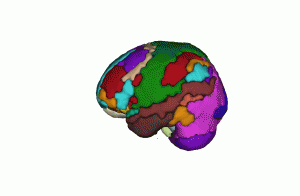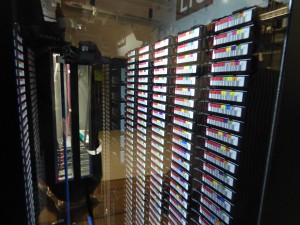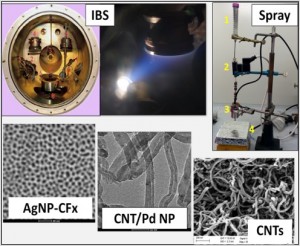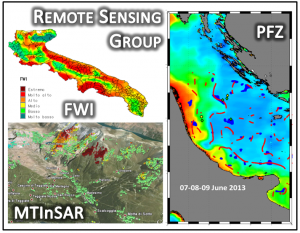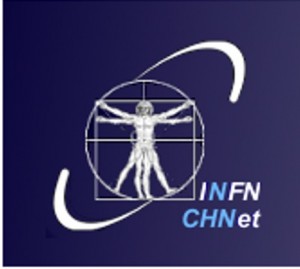The aim of the research group is to develop and deploy related application in the field of diagnostic medical imaging, besides a particular attention is given to the “Big Data” approach, distributed computing on grid environments as the European Grid Infrastructure (EGI) and cloud services for large scale.
PERSON
The PERSON project (PERvasive game for perSOnalized treatment of cognitive and functional deficits associated with chronic and Neurodegenerative diseases) aims to achieve an ICT environment for diagnosis and therapy, based on a pervasive and innovative system, for both the early diagnosis of neurodegenerative diseases and to support the processes of personalized therapy in case of diagnosed pathology. It will be developed a new generation pervasive game with which the user can interact. During the interaction, the game will be able to diagnose, with the doctor, the disease status of the player and suggest therapeutic exercises in the form of game relieving the symptoms of cognitive impairment and / or slowing the progression of disability. The continuous adaptation of the therapy compared to patients’ reactions will be implemented through hardware wearable (sensors and actuators) and algorithms for user profiling & adaptivity able to analyse the data and determine the treatment to be given. The algorithms developed in the project PERSON will be available and can be used on the PRISMA Cloud platform implemented on the RECAS Data center.
The research activity on electroencephalographic and electrocorticography data focuses on methodological and computational aspects of neuroscience research, and on the dynamical networks subserving function.We develop new techniques, rooted in complex networks theory, for inferring functional connectivity architectures from the dynamics of the recorded data, in challenging cases of short, noisy and complex EEG and ECoG time series. Some of the paradigms that we exploit to this aim are: synchronization, spectral and wavelet analysis, Granger casuality and others. We implement and validate novel methodologies and apply them, together with already established ones, in several multidisciplinary projects in collaboration with neurologists, related to pathologies like migraine, Huntington corea and epilepsy. Some of the previous projects we accomplished were related to (i) pain-related evoked responses and reduced habituation to repetitive stimulation in migraine. (ii) informational patterns of electrocorticography data from temporal lobe epilepsy (iii) study of the transcranial magnetic stimulation in migraine patients (iv) functional and effective connectivity in EEG during intermittent flash stimulation in migraine with and without aura (v) neural netowrk approaches for Huntigton disease.
ReCaS (Rete di Calcolo per SuperB e altre applicazioni) is a PON project funded by MIUR within the program Research and Competitiveness 2007-2013. The project ended on July 22, 2015 after setting up an e-infrastructure consisting of four new Data Centers located in the South of Italy (Naples, Bari, Catania, Cosenza). The Bari ReCaS Datacenter (www.recas-bari.it), which has incorporated the existing Bari Computer Center for Science, is now a major data center in the national panorama with more than 12,000 cores, 5 PB of disk space, 2.5 petabytes of tape storage, an HPC cluster with 800 cores and 20 accelerator GPU cards. The Bari ReCaS Datacenter provides support to the high energy physics experiments currently running at LHC at CERN (in particular ALICE and CMS for which it acts as a TIER2) and to the research activities of the INFN Sezione di Bari and of the Physic Department, including Theoretical Physics. The Bari ReCaS Datacenter is also used by research groups of other departments of the Bari University, groups of CNR, ect. The Bari ReCaS Datacenter can be used in several ways: interactively or submitting job to the batch system and/or to the HPC cluster. Some of the resources are also provided by means of the cloud technology developed in the PRISMA project: users (and in particular PHD students) can obtain a Virtual Machine (VM) configured in order to fit their precise requirements and a personal storage to store the data and the documents produced during the PHD activities. In order to constantly improve the quality of the user support provided by the Bari ReCaS Datacenter, an intense research program is carried on by the group in charge of the management of the data center, called Progetti_IT . The group in fact, participates to a series of European, national and regional projects to find improvements to the cloud technology and to apply them in real use cases.
The aim is the design, implementation and characterization of various types of innovative nanomaterials. Their great importance is due to the principle that all materials interact with the outside through their surface. Nanomaterials, having a very high surface/volume ratio, perfectly meet such requirement. Special attention is actually devoted to the physical deposition of metallic or oxide nanostructures by means of Ion Beam Sputtering (IBS), to obtain thin-layer nanocomposites, i.e. metal or metal oxides nanoparticles (Ag, Cu, ZnO, TiO2 NP) in Teflon-like matrix (CFx). This novel nanocomposites found application as new-generation antimicrobial agents, to be used for surface treatments, where they have proven their effectiveness for treating infectious diseases, including antibiotics resistant ones. Nanomaterials are also interesting for the development of new device generation and starting from solution of powders, thin films can be obtained by Spray technique. For example Carbon Nanotubes (CNTs) deposited by this technique can be applied to develop gas and vapor sensors or UV-Vis light detectors, or Nanodiamond particles to obtain UV photocathodes (Italian patent application n. 102015000053374).
The Remote Sensing Group (RSG) of the Physics Department of the Polytechnic of Bari (Italy) is active in the field of remote sensing for Earth Observation (EO). RSG has been involved in Earth Observation projects funded by national and international space agencies and institutions (Italian Space Agency, ESA, NASA, ENEA, European Commission). The research and production activities are also supported by a Polytechnic of Bari spin-off company (GAP s.r.l.) established in 2006 by the staff of RSG. The RSG is equipped with its own processing center (storage and computing servers) and has also access to the ReCaS computing centre. The main research areas of the RSG are outlined here below.
Sea: study of the pollution of the sea coastal waters, using optical and Infrared (IR) sensors mounted on satellites. The advantage of these remote sensing techniques has been also shown in the field of Indirect Methods of Fish Detection that combine different remote sensed parameters to perform fishery resources exploration. In this field the RSG has developed an independent processing chain able to produce maps of Potential Fishing Zones. The RSG has also a consolidated background in thematic mapping applied to Synthetic Aperture Radar acquisition for oil spill detection.
Land: a well consolidated area of research activity is the processing of data acquired by Synthetic Aperture Radars (SAR) with particular emphasis on Differential SAR Interferometry (DInSAR). This technique has been successfully applied to obtain topographic maps and study ground displacements with an accuracy of 1 mm/year. The major interest of the group is the assessment of EO-based methodologies to produce landslide early-warning maps, which rely on the detection of temporal changes of slope-related surface factors, associated with static landslide susceptibility mapping. The RSG has implemented a Multi Temporal Interferometry (MTI) software, named SPINUA and based on Persistent Scatterers, able to process multi-temporal series of acquisitions for the monitoring of potentially unstable slopes and buildings even in scarcely urbanized areas. The RSG has also a consolidated background in thematic mapping and change detection techniques applied both to SAR and Optical images (flood maps, land use maps, deforestation maps, fire maps, coastline extraction, etc).
Air: development and exploitation of meteorological models that are of crucial importance in analysis and forecasting of weather conditions associated with various types of environmental hazards, particularly in air pollutants diffusion, hydro-geological risk conditions forecasting (flood risk), fire ignition and spread risk forecasting, sea conditions forecasting. Numerical modelling is an essential tool in advanced research of atmospheric physics because it allows to perform ideal experiments for the study of many atmospheric processes. The atmospheric models more suitable for the representation of the processes involved in these risks are prognostic limited area meteorological models which, through the resolution of numerical equations describing the thermodynamic and dynamic behaviour on the atmosphere, upon domains ranging from medium to a regional scale, are able to determine the spatial and temporal evolution of atmospheric variables.
Thermoluminescence is one of the most important techiques in dating of inorganic archaeological finds as pottery, clay-bricks, kiln, burnt flint. This technique allows to date or to test the autenticity of all the archeological material containing quartz, feldspar and other thermoluminescent minerals as long as this material has been heated at temperature higher than 800 oC for long time. So dating a pottery we date only the last baking at high temperature. This technique uses the sample as a natural dosimeter, so the thermoluminescence signal is due to the effect of α,β and 𝛾 radiation released from natural isotopes as uranium, thorium and 40-potassium, present in the find and in the adjacent land, and it allows to evaluate the archaological dose absorbed starting from the last baking. So, if we want to know the age of the sample, we must evaluate the annual dose; the ratio of these two quantities gives the find’s age. We can measure the annual dose putting calibrated dosimeters, as LiF, in the archeological situs for a long time (three-six months) or measuring the quantity of uranium, thorium and 40-potassium in the terrain and il the pottery utilizing α and 𝛾 spectrometry. Our laboratory has collaborated with archaeologists of Bari University, Calabria University and Soprintendenza ai beni culturali della Puglia.



